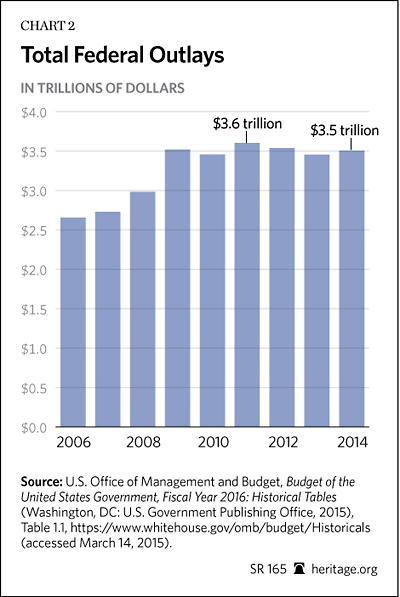Alex Adrianson documents for the Heritage Foundation’s “Insider Online” blog some good news surrounding federal legislation designed to control government spending. He quotes Stephen Moore’s analysis:
Spending cuts have been positive for the economy. Total government spending as a percentage of GDP has plummeted from 24.4 percent in 2009 to 20.3 percent in 2014. From 2011 to 2014 alone, discretionary spending dropped by 2 percentage points of GDP. The economic growth rate, although still far too low, has crept upward as government spending has fallen. No evidence indicates that spending cuts have restrained growth, despite the predictions of many economists. The 4.1 percentage point reduction in federal spending is the equivalent of $714 billion (based on the GDP in 2014) in resources remaining in the private sector each year rather than being squandered by the federal government. This constitutes one of the largest fiscal retrenchments in modern times. […]
The BCA is far from ideal, but it has produced beneficial results for the U.S. economy and the federal fiscal situation. Under the Budget Control Act, total federal outlays have fallen from $3.603 trillion in 2011 to $3.506 trillion through FY 2014. This is the first three-year stretch of declining federal outlays since Dwight Eisenhower’s first term in office. The BCA slammed the brakes on the reckless government activism of 2008, 2009, and 2010.



